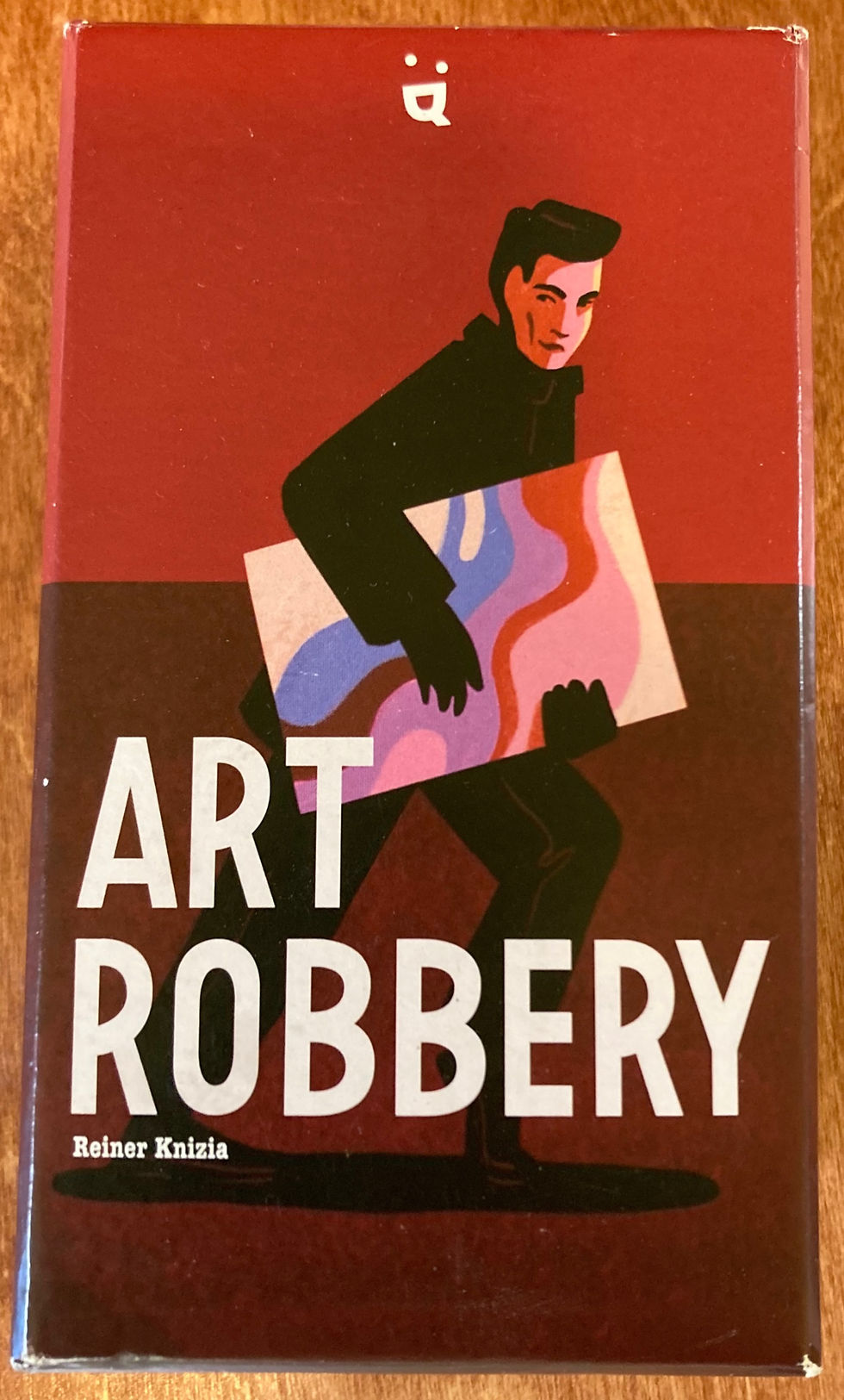Hello! I'm finally back with another review – this time of a pocket-sized game by Helvetiq. Art Robbery is a 15-20 minute game that can be played with two to five players. It is designed by prolific and talented game designer Reiner Knizia, who also designed El Dorado (which I reviewed here), Lost Cities (which I reviewed here), and Royal Visit (which I reviewed here).

This is the box's cover. For a sense of its size, it fills up a large pocket and could be easily packed away into a tote bag or purse.
In Art Robbery, players are robbers who have just completed a heist in an art gallery and are now dividing up the loot. There are a set of tiles in the center of the table and a deck of cards with values matching the numbers on those circular tiles. On a player's turn, they simply play a card, which could either have a number, a guard dog, the boss, or a greedy thief printed on it. That number or illustration determines what players do. If, for instance, a player played a card with a three printed on it, they would take the tile with a three on its face from the table and add it to their haul. The player with the most points at the end of the game, represented by the numbers printed on the tiles, will win.

The components for a game of Art Robbery laid out on the table. The four color-coded piles correspond to the game's four rounds.
Art Robbery is a game with a tremendously fun take-that mechanic. If, when you play a card, there is no tile with that value visible in the center of the table, you may take a tile with that value printed on it from another player. However, if that player has the guard dog figurine, they can refuse to give you that tile, and give you the guard dog instead. In this way, they can prevent you from taking a valuable tile. You can also take the dog from them directly by playing a card with an illustration of the guard dog on it from your hand.
Cards with an illustration of the boss on them allow players to take the boss card, but she is only worth the five points printed on her tile if players also have the four- or five-value tiles from that round in front of them. If not, she gets put back in the box. Finally, players can play a greedy thief card to take any of the tiles in the center of the table, including the boss. They can't use this card to take a tile from another player, though.

In this picture, one player has played a one, and so they have taken the tile with a one printed on it for themselves.
It's important to mention that there's one key twist in Art Robbery. Some tiles have small white dots printed on them. These are alibis, and the player with the fewest alibis at the end of the game gets no points! In round one, only the zero tile has alibis printed on it, but by round two, the one tile has a single alibi on it, as well, and they become more common every round. This creates a trade-off in the first two rounds, with players choosing between taking valuable tiles and avoiding arrest and losing all their points. Players tend to fight tooth and nail over tiles with alibis printed on them, and they bounce back and forth around the table.
This game is quick, and you can easily bring it along to a restaurant or café because of its small size. Its high player count makes it fun to break out when you have a few friends around, and it's very easy to teach. I definitely recommend buying a copy – it's widely available in board game stores and via online game stores like Miniature Market, and it's quite inexpensive.
That's all for this entry, but I'm back to writing blog posts, so there'll be more soon! Let me know what games you'd like to see reviewed in the comments below – more Reiner Knizia games, more Helvetiq games like this one, or a different kind altogether!
Comments